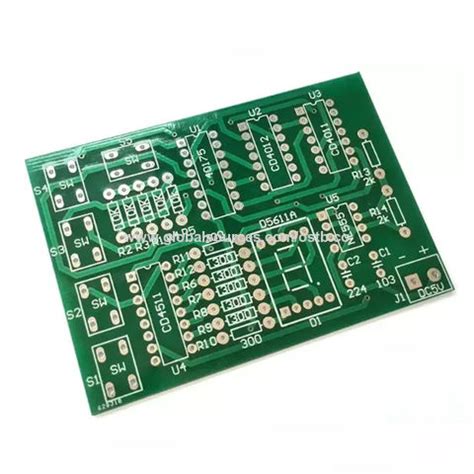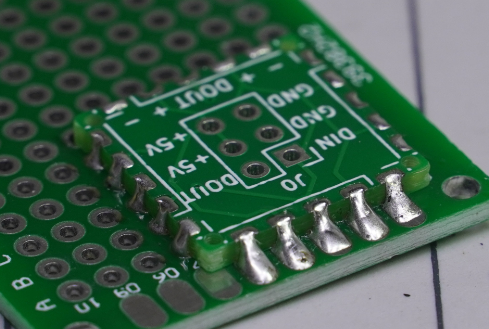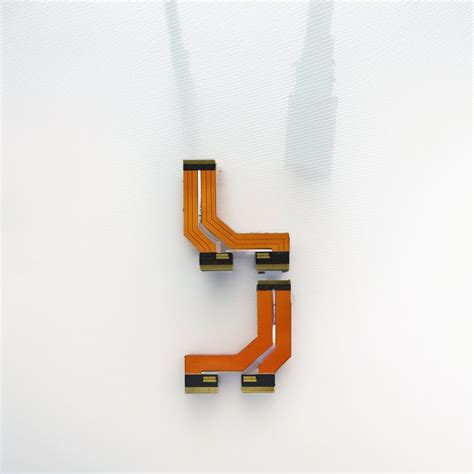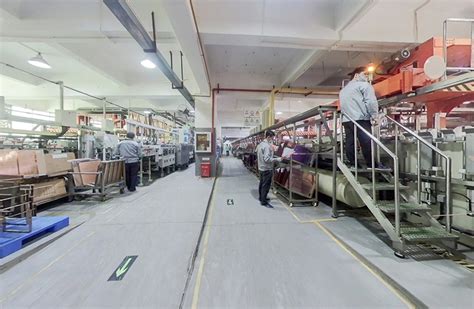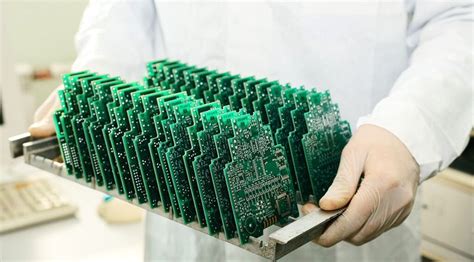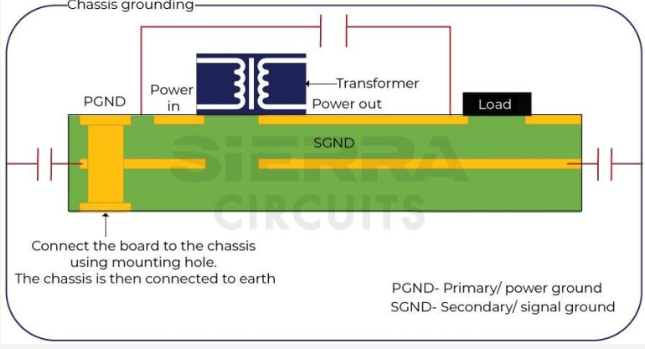Mastering Custom PCB Printing and Assembly for Innovative Designs
Key Takeaways
Navigating the landscape of custom PCB printing and assembly can significantly enhance your electronic projects. As you delve into this field, understanding the nuances of pcb assembly becomes imperative. The pcba process involves intricate layers of design and meticulous assembly techniques, geared towards producing prototypes that meet high-quality standards. One of the fundamental takeaways is that a solid grasp of your PCB design can streamline both the printing and assembly stages. Focus on selecting the right materials, as innovations in this area can lead to enhanced functionality and durability. Additionally, addressing common challenges in production through proactive troubleshooting can vastly improve your outcomes, ensuring that your innovative designs not only meet expectations but also exceed them. Overall, mastering these aspects will empower designers and engineers alike to push the boundaries of electronic innovation effectively.
Introduction to Custom PCB Printing and Assembly
Custom PCB printing and assembly hold significant importance in the world of electronics, shaping the way devices function and enhancing their overall performance. Understanding the fundamentals of PCB assembly (commonly referred to as PCBA) involves not only recognizing the intricate designs that go into creating a printed circuit board but also appreciating the craftsmanship required in assembling these components. The process begins with a well-thought-out schematic that guides the layout of various electronic elements, ensuring that they are positioned optimally for functionality and reliability.
As devices become increasingly complex and innovative, mastering custom PCB printing is essential for engineers and designers alike. Implementing modern techniques during this process can lead to the creation of high-quality electronic prototypes that reduce time to market while maintaining performance standards. Effective production relies on a synergy between design and subsequent assembly, allowing for rapid iteration and refinement of concepts.
Ultimately, the goal is to achieve precision in both manufacturing processes, leading to more efficient designs that can handle new challenges posed by cutting-edge technology. Additionally, this understanding empowers innovators to push boundaries in making devices more compact, powerful, and versatile, ensuring their designs stand out in a competitive landscape.
Understanding the Basics of PCB Design
Designing a Printed Circuit Board (PCB) is a fundamental aspect of electronic innovation, serving as the backbone for many modern devices. To effectively engage in custom PCB printing and assembly, it’s crucial to grasp the basics of PCB design. The design begins with defining the desired functionality and layout of the circuit, which involves selecting components such as resistors, capacitors, and integrated circuits that will fit within a limited physical space while meeting electrical requirements. Utilizing industry-standard software for schematic capture and layout can help streamline this process, enabling designers to visualize the connectivity between components clearly.
One vital step in this design phase is ensuring proper pcb assembly practices are integrated from the start. This means designing pads that are compatible with soldering methods, whether through surface mount technology (SMT) or through-hole techniques for PCBA. It’s also essential to pay attention to spacing rules to avoid crosstalk and signal integrity issues once assembled.
“An effective PCB design anticipates potential challenges in the assembly process; planning ahead can significantly reduce errors during production.”
Additionally, incorporating test points into your layout will save considerable time during troubleshooting and testing phases post-assembly. Adapting designs for manufacturability can significantly enhance productivity and yield higher quality prototypes. By understanding these foundational aspects of PCB design, engineers can ultimately elevate their innovative designs while paving the way for effective custom PCB printing and assembly.
Essential Techniques for High-Quality PCB Printing
To achieve high-quality results in PCB printing, one must focus on several essential techniques that can significantly enhance the final product. First and foremost, it is vital to ensure that the design files are impeccably prepared. Utilizing advanced design software can aid in creating precise layouts, reducing the likelihood of errors during the PCB assembly process.
Another critical aspect is selecting the appropriate printing technology. There are various methods, including screen printing, laser printing, and inkjet printing. Each has its unique advantages; for instance, screen printing is known for its thickness and durability, which are crucial for high-density components.
Furthermore, proper solder mask application is essential to prevent solder shorts during assembly. Poorly applied masks can lead to rework and increased costs. The precision of the solder paste application also plays a significant role in ensuring that components adhere correctly to the board during assembly.
| Technique | Description | Benefits |
|---|---|---|
| Design Software | Use specialized tools for layout preparation | Enhanced accuracy and reduced errors |
| Printing Technology | Choose from screen, laser, or inkjet printing | Tailored solutions based on needs |
| Solder Mask Application | Correctly apply to avoid shorts | Minimizes rework costs |
| Solder Paste Application | Accurate application critical for component adhesion | Ensures strong connections in PCBA |
Incorporating these techniques not only improves aesthetics but also significantly enhances functionality—ensuring that your innovative designs can withstand rigorous testing and application scenarios. Prioritizing these essential practices will lead to a more efficient production process and superior electronic prototypes ready for today’s dynamic market.
The Assembly Process: Steps for Success
The pcb assembly process is a crucial step in transforming a printed circuit board design into a functional product. Initially, it begins with the preparation of the pcba components, which involves sourcing high-quality materials and ensuring all necessary parts are readily available. A clean workspace is essential, as it minimizes contamination that can lead to circuit failures. The placement of components on the board should be done meticulously, making use of automated pick-and-place machines for precision and efficiency. It is also important to verify the orientation of polar components to avoid errors during soldering.
Soldering itself can be executed through various methods such as wave soldering or reflow soldering, depending on the complexity and scale of the production run. Each method has its advantages; for instance, reflow soldering is ideal for surface-mounted devices (SMDs) found in modern designs because it allows for even heat distribution across the board. After soldering, it’s imperative to conduct thorough inspection processes—such as Automated Optical Inspection (AOI)—to catch any defects early on.
Further quality assurance can include functional testing to ensure that the pcb assembly operates under real-life conditions. At this stage, addressing any discrepancies or failures promptly is crucial; failing to do so may result in increased production costs and project delays. Integrating feedback loops from testing stages into design adjustments can enhance future pcba iterations significantly. Ultimately, mastering these steps ensures that innovative designs are not only executed proficiently but also lead to reliable electronic prototypes ready for market integration.
Streamlining Production: Tips and Best Practices
Efficient production is crucial in the realm of custom PCB printing and assembly. To enhance your processes, consider implementing lean manufacturing principles which focus on minimizing waste while maximizing value. This can involve standardizing procedures for PCB assembly to ensure each step is performed consistently, reducing errors and improving the turnaround time. Another effective strategy is to utilize advanced software tools for simulation and design verification, which can help identify potential issues before the actual production begins. When working on PCBA, maintaining a clean and organized work environment plays a vital role in preventing contaminants from affecting the quality of your components. Additionally, employee training should not be overlooked; investing in skilled labor can greatly alleviate the likelihood of human error in both printing and assembly processes. Lastly, collaborating closely with component suppliers to ensure timely delivery and quality assurance can further streamline your production efforts, allowing for smoother transitions from printing to assembly, ultimately leading to a more efficient production cycle and high-quality electronic prototypes.
Troubleshooting Common PCB Issues
When working with custom PCB printing and assembly, encountering problems is somewhat inevitable, but knowing how to troubleshoot them effectively can save time and resources. Common issues may arise during the pcb assembly process, such as misaligned components, which can lead to poor electrical connections. To address this, it’s crucial to implement precise alignment techniques and use reliable fixtures during the assembly stage. Another frequent challenge is the occurrence of soldering defects—such as cold joints or excess solder—which can compromise the overall integrity of the PCBA. Regular inspection techniques, such as employing a microscope or automated optical inspection systems, can help identify these defects early in the process.
Additionally, thermal management issues often emerge due to inadequate heat dissipation for components like microprocessors or power amplifiers. Addressing this may require optimizing layout designs by ensuring sufficient copper thickness and considering thermal vias for effective heat transfer. Lastly, signal integrity problems might surface if high-speed signals are not carefully routed. It is vital to understand impedance matching and consider strategies like differential signaling or controlled impedance routing to mitigate these concerns.
By keeping an eye on these common pitfalls related to pcb assembly, designers can enhance their workflow and ensure high-quality electronic prototypes that meet innovative design standards. Adopting a systematic approach to troubleshooting will ultimately strengthen your projects and lead to more reliable end products that meet market needs.
Innovations in PCB Materials and Technology
The landscape of custom PCB printing and assembly is continuously evolving as new materials and technologies emerge, significantly impacting the performance and functionality of electronic devices. Recent advancements in materials science have introduced flexible substrates, which allow for the creation of PCBs that can bend, twist, and conform to various shapes. This innovation is particularly beneficial for industries like wearables and IoT devices, where space constraints are paramount. Furthermore, the development of high-frequency materials has enhanced the electrical performance of PCB assembly, enabling faster signal transmission with less signal loss—critical for high-speed applications.
In addition to material advancements, the integration of smart manufacturing technologies is revolutionizing traditional processes. Techniques such as automated optical inspection (AOI) ensure that every stage of the pcba process maintains superior quality control. By leveraging machine learning algorithms, manufacturers can anticipate potential issues during production, reducing defects and minimizing wasted resources. This proactive approach not only streamlines production but also enhances overall efficiency.
Moreover, innovations in printing techniques, such as inkjet printing for solder pastes or conductive inks, facilitate rapid prototyping and allow designers to experiment with unique layouts without incurring significant costs. As a result, designers can create more intricate circuit designs while maintaining high levels of precision during the PCB assembly phase.
With these advancements in materials and technology, businesses in various sectors are better equipped to push the boundaries of innovation in electronics design. The ongoing pursuit for enhanced durability, flexibility, and speed in custom PCB printing and assembly is set to reshape how we think about electronic solutions moving forward.
Conclusion: Future Trends in Custom PCB Design
As the landscape of technology continues to evolve, the future of custom PCB printing and pcba is set to witness remarkable advancements that will shape innovative design processes. Emerging trends such as the integration of IoT (Internet of Things) technologies will demand higher levels of customization and intricacy in PCB assembly to accommodate smart devices that require compact and efficient layouts. Moreover, the ongoing development in automated assembly techniques will significantly enhance precision and reduce production time for high-quality electronic prototypes. Additionally, the rise of sustainable practices in manufacturing will lead to the adoption of eco-friendly materials for custom PCBs, prioritizing not just performance, but also environmental impact. As designers explore flexible substrates and high-frequency materials, the versatility of pcba will be expanded further, enabling them to deliver unique solutions across various industries. By staying informed on these trends and continuously adapting to new technologies, professionals in the field can ensure that their designs not only meet current demands but also set the standard for future innovations in electronic manufacturing.
Conclusion: Future Trends in Custom PCB Design
As we look to the future of custom PCB printing and assembly, several trends are shaping the landscape of pcba technology. One key trend is the increasing adoption of automated assembly processes, which significantly enhance efficiency and reduce the likelihood of human error. This shift towards automation allows for faster production cycles, enabling designers to iterate and bring their innovative designs to market more swiftly. Additionally, there is a growing emphasis on sustainability in pcb assembly practices. Manufacturers are exploring eco-friendly materials and processes that minimize environmental impact while maintaining high performance standards.
Moreover, advancements in PCB materials play a crucial role in pushing the boundaries of what’s possible in electronic design. High-frequency materials and flexible substrates are increasingly being utilized to cater to diverse applications, from consumer electronics to advanced aerospace components. The integration of smart technology within PCBs is another exciting development, enabling lower power consumption and enhanced functionality.
As these trends continue to evolve, staying ahead of the curve will be vital for designers and manufacturers alike. Engaging with communities focused on pcba, participating in industry-led discussions, and investing in innovative tools will help ensure that businesses can harness these changes effectively. Embracing these advancements not only improves efficiency but also cultivates an environment ripe for creative exploration in custom PCB designs.
FAQs
What is pcb assembly?
PCB assembly refers to the process of combining various electronic components onto a printed circuit board (PCB) to create a functional electronic device. This includes soldering components and ensuring they are placed correctly.
What materials are typically used in pcba?
The materials used in pcba often include various types of substrates like FR-4 (fiberglass), copper for traces, and solder for attaching components. Additionally, surface finishes like HASL or ENIG may be utilized to protect the board.
How can I improve the quality of my pcb assembly?
To enhance the quality of your pcb assembly, focus on using high-quality components, implement rigorous testing during the process, and apply best practices in soldering techniques. Always ensure that your design adheres to industry standards.
What is the typical lead time for custom pcba projects?
The lead time can vary depending on project complexity, but typically ranges from a few days to several weeks, especially if custom PCBs need to be designed and produced before assembly.
For more information on pcb assembly services and how they can benefit your project, please click here: Andwin PCB Assembly Services.
This call-to-action highlights valuable resources regarding pcba, helping you delve deeper into improving your designs efficiently.

